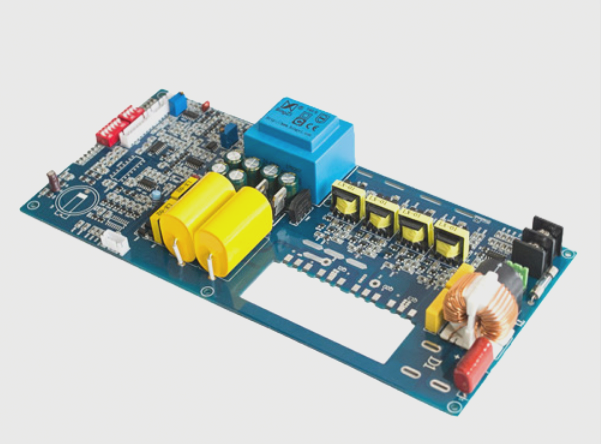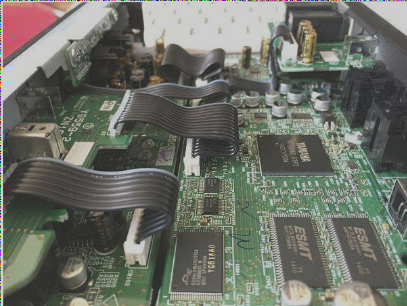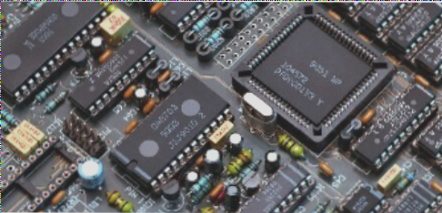1. What distinguishes FPC solder mask from a cover layer?
When designing flexible circuit boards, have you faced challenges in selecting solder masks and overlays? Both the solder mask and cover layer serve the fundamental purpose of insulation. Are you aware of the distinctions between them? Is it possible for the solder mask and cover layer to be used together for insulation? Do you consider the flexible solder mask to be equivalent to the solder mask used in rigid printed circuits?
1) Design: In reality, coverlay is extensively utilized in flexible circuit boards. Most FPCs require the addition of PI/FR4 reinforcement and EMI shielding layers. However, when BGA pads and a dense solder mask opening area are present, this can restrict the minimum opening size and the smallest material net, which should be maintained between adjacent openings.

I’m ready to help! Could you specify if there are any particular sections you’d like me to focus on more?
1) I want to discuss the cover layer and solder mask used together in FPCBs. First, apply the cover layer, then slightly overlap the solder mask to seal the cover layer and prevent any gaps in the combined layer. This design imposes higher production requirements to ensure functionality and reliability.
2) Thickness: Why opt for green solder resist instead of a cover layer? The typical thickness for a cover layer is 27.5/50 µm, while the solder mask thickness is 8/12 µm. Since customers require ultra-thin flexible PCBs, we recommend using solder mask instead of overlay.
3) Color: The most commonly used cover film color is yellow, and we typically stock yellow, white, and black films. Solder masks come in green, black, white, yellow, and other colors. It’s important to note that FPC solder masks differ significantly from PCB ones. The cost of FPC solder masks is notably higher due to their superior bending resistance and high-temperature tolerance compared to PCBs.
2. Test Methods and Standards for FPC Soft Boards
The objective of testing FPC soft boards is to establish standardized criteria for their appearance and quality. The guidelines for assessing the appearance quality allow for rejections, aiding in the enhancement of manufacturing processes and minimizing waste and environmental impact.
Text label: FPC soft board, FPC test method, FPC test standard
FPC soft boards comprise single, double, and multi-layer flexible copper foil substrates using polyimide (PI) or polyester (PET) as the base material, including both adhesive and non-adhesive types. Testing aims to set general rules for appearance and quality, with rejection criteria assisting in refining manufacturing and reducing unnecessary waste.
Testing methods involve visual inspections, magnifying glasses, and rulers as primary tools, with other instruments utilized as necessary.
Basic testing standards include:
1. Surface appearance of the substrate film;
2. Appearance of the covering layer;
3. Deviation between the connecting plate and covering layer;
4. Adhesive seepage and cover coating;
5. Color changes in conductors beneath the covering layer. After a 96-hour humidity test at 40°C and 90% humidity, standards for voltage resistance, bending resistance, and soldering must still be met;
6. Missing coating in the coating layer;
7. Poor electroplating adhesion.
Precautions:
Conductors in FPC require surface plating (anti-rust) such as gold plating, OSP, or tin plating. The storage environment should avoid corrosive gases, with temperature maintained at 20 ± 5 degrees Celsius and relative humidity controlled within 70% R.H. Under these conditions, the product’s effective shelf life is six months post-manufacture.
When designing flexible circuit boards, have you faced challenges in selecting solder masks and overlays? Both the solder mask and cover layer serve the fundamental purpose of insulation. Are you aware of the distinctions between them? Is it possible for the solder mask and cover layer to be used together for insulation? Do you consider the flexible solder mask to be equivalent to the solder mask used in rigid printed circuits?
1) Design: In reality, coverlay is extensively utilized in flexible circuit boards. Most FPCs require the addition of PI/FR4 reinforcement and EMI shielding layers. However, when BGA pads and a dense solder mask opening area are present, this can restrict the minimum opening size and the smallest material net, which should be maintained between adjacent openings.

I’m ready to help! Could you specify if there are any particular sections you’d like me to focus on more?
1) I want to discuss the cover layer and solder mask used together in FPCBs. First, apply the cover layer, then slightly overlap the solder mask to seal the cover layer and prevent any gaps in the combined layer. This design imposes higher production requirements to ensure functionality and reliability.
2) Thickness: Why opt for green solder resist instead of a cover layer? The typical thickness for a cover layer is 27.5/50 µm, while the solder mask thickness is 8/12 µm. Since customers require ultra-thin flexible PCBs, we recommend using solder mask instead of overlay.
3) Color: The most commonly used cover film color is yellow, and we typically stock yellow, white, and black films. Solder masks come in green, black, white, yellow, and other colors. It’s important to note that FPC solder masks differ significantly from PCB ones. The cost of FPC solder masks is notably higher due to their superior bending resistance and high-temperature tolerance compared to PCBs.
2. Test Methods and Standards for FPC Soft Boards
The objective of testing FPC soft boards is to establish standardized criteria for their appearance and quality. The guidelines for assessing the appearance quality allow for rejections, aiding in the enhancement of manufacturing processes and minimizing waste and environmental impact.
Text label: FPC soft board, FPC test method, FPC test standard
FPC soft boards comprise single, double, and multi-layer flexible copper foil substrates using polyimide (PI) or polyester (PET) as the base material, including both adhesive and non-adhesive types. Testing aims to set general rules for appearance and quality, with rejection criteria assisting in refining manufacturing and reducing unnecessary waste.
Testing methods involve visual inspections, magnifying glasses, and rulers as primary tools, with other instruments utilized as necessary.
Basic testing standards include:
1. Surface appearance of the substrate film;
2. Appearance of the covering layer;
3. Deviation between the connecting plate and covering layer;
4. Adhesive seepage and cover coating;
5. Color changes in conductors beneath the covering layer. After a 96-hour humidity test at 40°C and 90% humidity, standards for voltage resistance, bending resistance, and soldering must still be met;
6. Missing coating in the coating layer;
7. Poor electroplating adhesion.
Precautions:
Conductors in FPC require surface plating (anti-rust) such as gold plating, OSP, or tin plating. The storage environment should avoid corrosive gases, with temperature maintained at 20 ± 5 degrees Celsius and relative humidity controlled within 70% R.H. Under these conditions, the product’s effective shelf life is six months post-manufacture.




